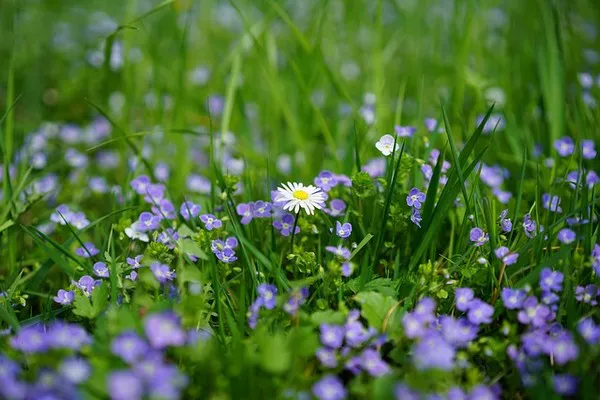The allure of wildflowers lies in their natural beauty and the ecological benefits they offer. Planting wildflowers not only adds a burst of color to your landscape but also supports local wildlife, pollinators, and the overall health of your environment. This comprehensive guide will take you through the steps of planting wildflowers, ensuring a successful and vibrant garden that both you and Mother Nature can enjoy.
Selecting the Right Location
The first step in planting wildflowers is selecting the perfect location. Consider the following factors:
a. Sunlight: Most wildflowers thrive in full sun, which means at least six hours of direct sunlight each day. Observe your landscape to identify the sunniest spots.
b. Soil Quality: Wildflowers are adaptable, but they generally prefer well-drained soil. Perform a soil test to determine the pH and nutrient levels of your soil. If needed, amend the soil to create optimal conditions.
c. Water Source: Access to water is essential, especially in the initial stages of growth. Ensure your chosen location is close to a water source, or plan for a reliable watering system.
Selecting the Right Wildflowers
The next step is to choose the wildflowers that are best suited to your location and your preferences. Consider the following factors:
a. Native vs. Non-Native: Native wildflowers are adapted to your region’s climate and soil, making them easier to maintain and better for local wildlife. Non-native wildflowers can be beautiful but may require more care.
b. Blooming Period: Select a variety of wildflowers with different blooming periods to ensure continuous color throughout the growing season.
c. Height and Habit: Pay attention to the height and habit of the wildflowers you choose. Mix taller species with shorter ones for a layered and visually appealing garden.
d. Color Palette: Plan a color palette for your wildflower garden that complements your existing landscape and personal preferences.
Preparing the Soil
Once you’ve chosen your wildflower species, it’s time to prepare the soil:
a. Clear the Area: Remove any grass, weeds, or debris from the planting site. You can do this manually or with the help of herbicides, but ensure you follow the manufacturer’s instructions for the latter.
b. Tilling and Amending: Tilling the soil to a depth of 4-6 inches will help improve aeration and drainage. If your soil test revealed nutrient deficiencies, incorporate organic matter like compost to enrich the soil.
c. Smoothing the Surface: After amending the soil, use a rake to create a smooth and level surface. This will make it easier to evenly distribute the wildflower seeds.
Planting the Seeds
When planting wildflower seeds, the goal is to evenly distribute them and ensure good seed-to-soil contact. Follow these steps:
a. Seed Mix: Most wildflowers are available as seed mixes, which contain a variety of species. Read the instructions on the seed packet to determine the recommended seeding rate.
b. Broadcasting: Hand broadcasting is the most common method for sowing wildflower seeds. Mix the seeds with fine sand or vermiculite to help spread them evenly. Use a handheld or mechanical seed spreader for large areas.
c. Lightly Rake: After broadcasting the seeds, use a rake to lightly press them into the soil. This helps ensure good seed-to-soil contact, which is essential for germination.
d. Watering: Water the newly sown area gently to settle the seeds. Continue to keep the soil consistently moist until the seedlings have established, which can take several weeks.
Maintenance
Once your wildflowers begin to grow, you’ll need to maintain your garden to ensure its continued success:
a. Weeding: Keep an eye out for weeds that can compete with your wildflowers for resources. Hand-pull weeds or use mulch to suppress them.
b. Watering: While wildflowers are generally drought-tolerant once established, regular watering is crucial during the initial stages of growth. Be mindful not to overwater, as this can promote weed growth.
c. Fertilizing: Generally, wildflowers do not require regular fertilization. However, if your soil is deficient in nutrients, a light application of a balanced, slow-release fertilizer in early spring can help.
d. Deadheading: To encourage prolonged flowering, consider deadheading (removing spent blooms) your wildflowers as they fade. This also prevents self-seeding, which can lead to an overcrowded garden.
e. Pest Control: Monitor your garden for any signs of pests or diseases and address them promptly. Organic solutions like neem oil can often be effective.
Enjoying the Benefits
Planting wildflowers offers numerous benefits, both for your garden and the environment:
a. Wildlife Habitat: Native wildflowers provide essential food and habitat for pollinators, birds, and beneficial insects, helping to support local biodiversity.
b. Low Maintenance: Once established, wildflower gardens are low-maintenance and require less water and care compared to traditional gardens.
c. Improved Soil Health: Wildflowers help improve soil structure and encourage beneficial microorganisms, promoting long-term soil health.
d. Aesthetic Appeal: Wildflowers add vibrant colors, texture, and beauty to your landscape, enhancing its visual appeal.
Conclusion
Planting wildflowers is a rewarding endeavor that allows you to contribute to the environment while beautifying your landscape. By selecting the right location, choosing appropriate wildflowers, and following best practices for soil preparation and maintenance, you can create a wildflower garden that thrives for years to come. Embrace the natural beauty of wildflowers and enjoy the numerous benefits they bring to your outdoor space.


